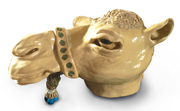Featured Writer: David Cobb
David Cobb, founder and past president of the British Haiku Society, wrote his first haiku in 1977 but published none until 1988. He began writing haibun in 1993 but published none until 1997 when his 'Arrival at the Saxon Shore' gained 2nd Prize in the first International Haibun Contest, organised by Woodnotes, San Francisco. He is the editor of The Iron Book of British Haiku (Iron Press1998), British Museum Haiku (British Museum Press, 2002, now in 12th reprint; 2nd American edition, 2003), The Humours of Haiku (Iron Press 2012) and the author of Spring Journey to the Saxon Shore (Equinox Press 1997), Palm (Equinox Press 2002), Forefathers (Leap Press 2004), Business in Eden (Equinox Press 2006), spitting pips (Equinox Press 2009), Marching with Tulips (Alba Press 2013) and Anchorage (Red Moon Press 2014). What Happens in Haibun (Alba Press 2013), a critical study of haibun for creative writing courses, was published as a companion volume to Marching with Tulips. In 2013 David Cobb received 2nd prize in the Genjuan International Haibun Contest, Kyoto. Cobb's website is: David Cobb
Some Advice on Haibun Writing
The So what? test has long been in favour as a means of sorting haiku that move us from those that leave us quite unmoved. In the case of haibun, apply this question to both the prose and the haiku and get a positive answer each time.
David Cobb
Fearing
 a glint of sunlight a glint of sunlight
caught by copper tongs
in the dusty grate
By my fireside, perched on its rim at a jaunty but almost perilous angle, a cone of white plaster on a small round plinth of yew. Gouged out of the cone's face, wrinkles shivering down into its heart. As often it sets me thinking of her.
This sculpture she made for the John Keats Bicentenary one mid-June, in the garden of his house in Hampstead. Inspired by his sonnet When I have fears that I may cease to be …
Midsummer's Night
a white face haunting
the mulberry
That was before the cancer took hold in her breast, before she found herself on her own with two growing boys to raise, before she reverted to her maiden name. Oh, then she had fears that she would cease to be, fears never spoken, but I knew them from her tears wetting my chest.
I tuck those dark memories away in her chuckle, as she would tell me of some prank in her free-and-easy days. How once, in Ireland, in a circus, she had stood in when the usual stooge had walked out on the knife-throwing act. All the way round her body knives had stitched her to the board through a scanty dress. Fears then of 'ceasing to be', surely, but not daring to tremble.
Reward? The knife-thrower, a gypsy, gave her a stuffed giraffe. Ten or more feet tall. She dragged it onto the night ferry to Holyhead, hitch-hiked with it to London, could not get it through the door where she lodged. The giraffe ever since loaned out to some grand stately house in Derbyshire.
 Making life-size heads of camels from clay, that was my folly, and in her pottery class she showed me how. Pieced together my first one when, in the kiln, it shattered. Did not restrain me when, having a whole portfolio of camels, I switched my fancy to rhinos. Illustrated some of my haiku, married a poet, we lost touch, I didn't dare ask … Making life-size heads of camels from clay, that was my folly, and in her pottery class she showed me how. Pieced together my first one when, in the kiln, it shattered. Did not restrain me when, having a whole portfolio of camels, I switched my fancy to rhinos. Illustrated some of my haiku, married a poet, we lost touch, I didn't dare ask …
solstice shadows
a shiver passes
through the plaster cone
Notes: First published in KYSO Flash 3, Spring 2015. Photographs of White Cone and Camel in Clay are by Alison Cobb and reduced in size from original images and reproduced here by her permission.
|

